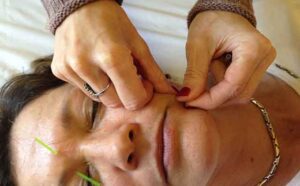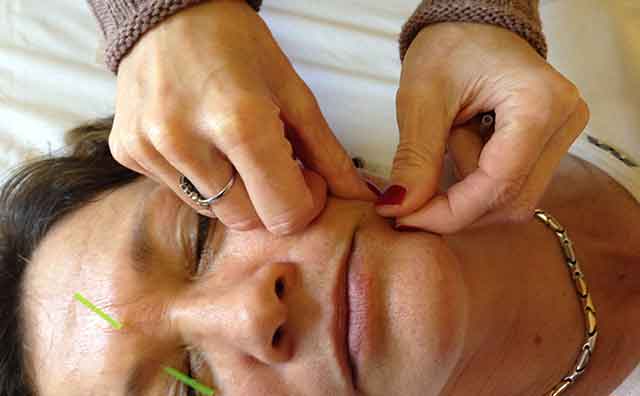
Safety concerns when treating the face
Treating the face and neck area with acupuncture is unique with regards to safety concerns. Needling the face can pose challenges due to its heavily vascularized anatomy, relatively dense innervation and delicate and complex muscularisation. There are more blood vessels per sq cm on the face than elsewhere on the body. These vessels rise close to the surface in many areas. Although the face has more muscles per square centimeters than any part of the human body, there are only two main nerves that innervate the entire face, these nerves have tiny branches which encompass the entire face. needling into these can result in pain, neuropathy and possibly paralysis. As the face ages, these issues become more pronounced due to thinning of the skin, fat and bone loss.
Proper facial acupuncture training should involve in depth knowledge of diagnosis, history, assessment, anatomy, contraindications, red flags and documentation.
Unlike most forms of acupuncture, facial acupuncture can have serious side effects if done improperly. Due to raising energy to the head migraines, dizziness and potentially stroke can occur if these contraindications are not prescreened for thoroughly. Less serious side effects such as bruising and bleeding can be common, but are avoidable with adequate precautions.
The tools used for facial acupuncture are an important step in reducing many safety concerns. Specially designed intradermal needles for collagen enhancement, tiny glass facial cups and specially shaped gua sha tools all work in harmony to provide safe and effective treatments. If used properly these tools can relax a tight masseter, release fascial adhesions, move stagnant lymph and clear heat. Used improperly they can leave marks on the skin release a blood clot, or damage delicate capillaries.
Treating the neck can pose its own safety issues. Major veins and arteries are close to the surface. The skin on the neck is thin compared to many other parts of the body. Precision is required for needling points such as ST9, Ren 23, and SI17
Teaching facial acupuncture classes internationally and working as a clinic supervisor for almost 20 years I have noticed students hesitation to treat certain areas of the body. The eye area, lips and especially the neck are commonly avoided due to concerns of bruising or injury. Treating the neck is not inherently dangerous, it requires knowledge of anatomy and quality needles. In reality, the major venous structures in the neck are very thick and puncturing them would be difficult. I like to review anatomy and point location with my students in class to provide confidence. ST9 in particular can be a sticking point (no pun intended). The way I teach finding it is to tell my student to put two fingers on the larynx, ask the patient to swallow, when you feel the laryngeal prominence slide your index finger laterally into the space between the larynx and the SCM. Find the carotid pulse, and don’t needle there! The worst I have seen in needling the neck is a bruise from nicking a capillary, not lethal but can be unsightly.
The area around ST5 & 6 can be tricky as well due to facial veins and nerves, usually some gentle palpation, good lighting and a trained eye along with a generous application of arnica gel can alleviate any potential problems. I always keep some Yunnan baiyao and Q-tips close at hand when removing needles should any bleeding or bruising occur.
Expert training in prescreening, needling, and using palpation and visual skills, quality needles and other specialized tools, in-depth knowledge of facial anatomy, and appropriate lighting will address many of the potential issues when needling the face and neck. Even with these tools, remember that everyone’s facial structure is slightly different. I tell my students to practice facial acupuncture skills for 10-12 treatments before attempting to practice on a patient. Your comfort level will improve, and so will your patients satisfaction and results. You can learn more by going to facialacupunctureclasses.com.

